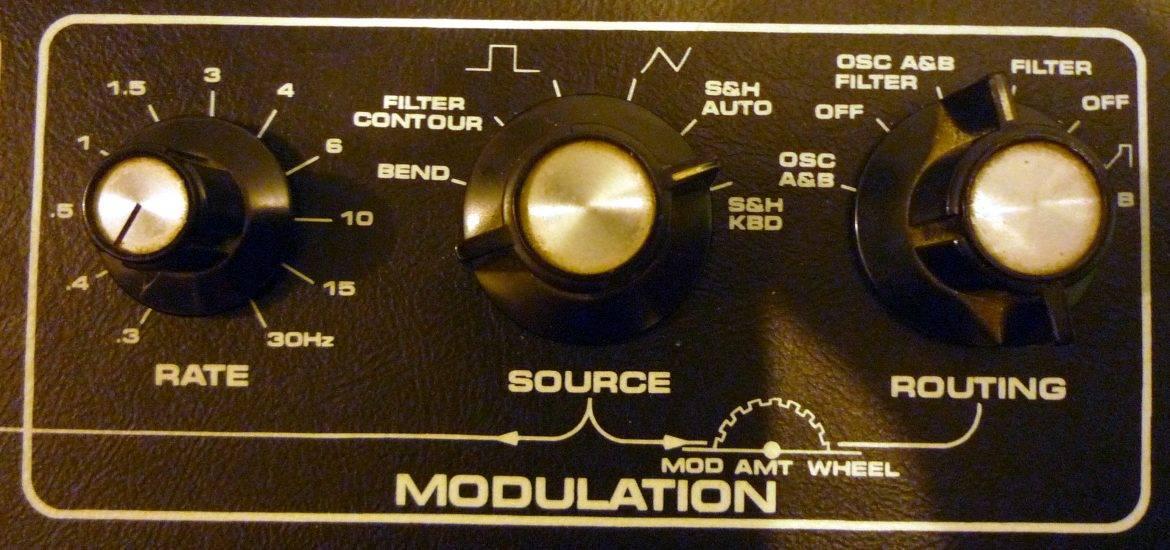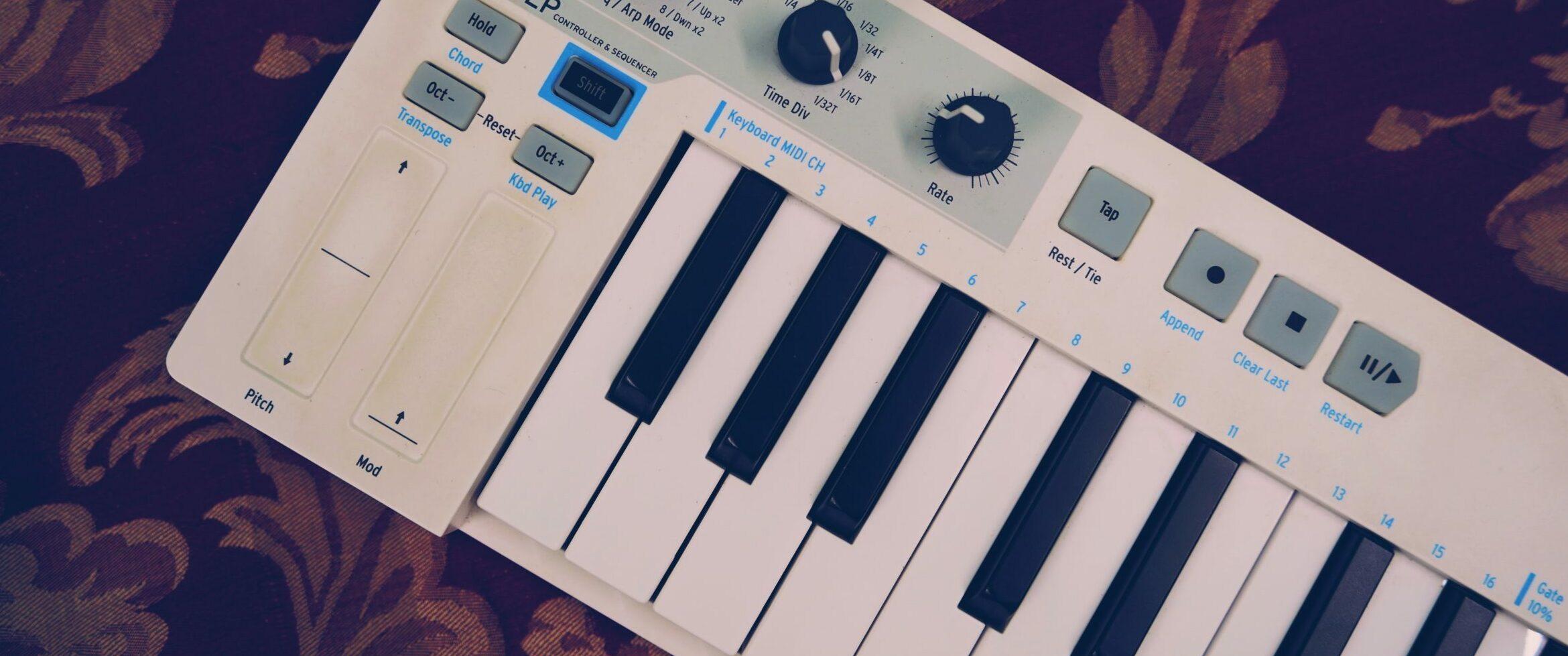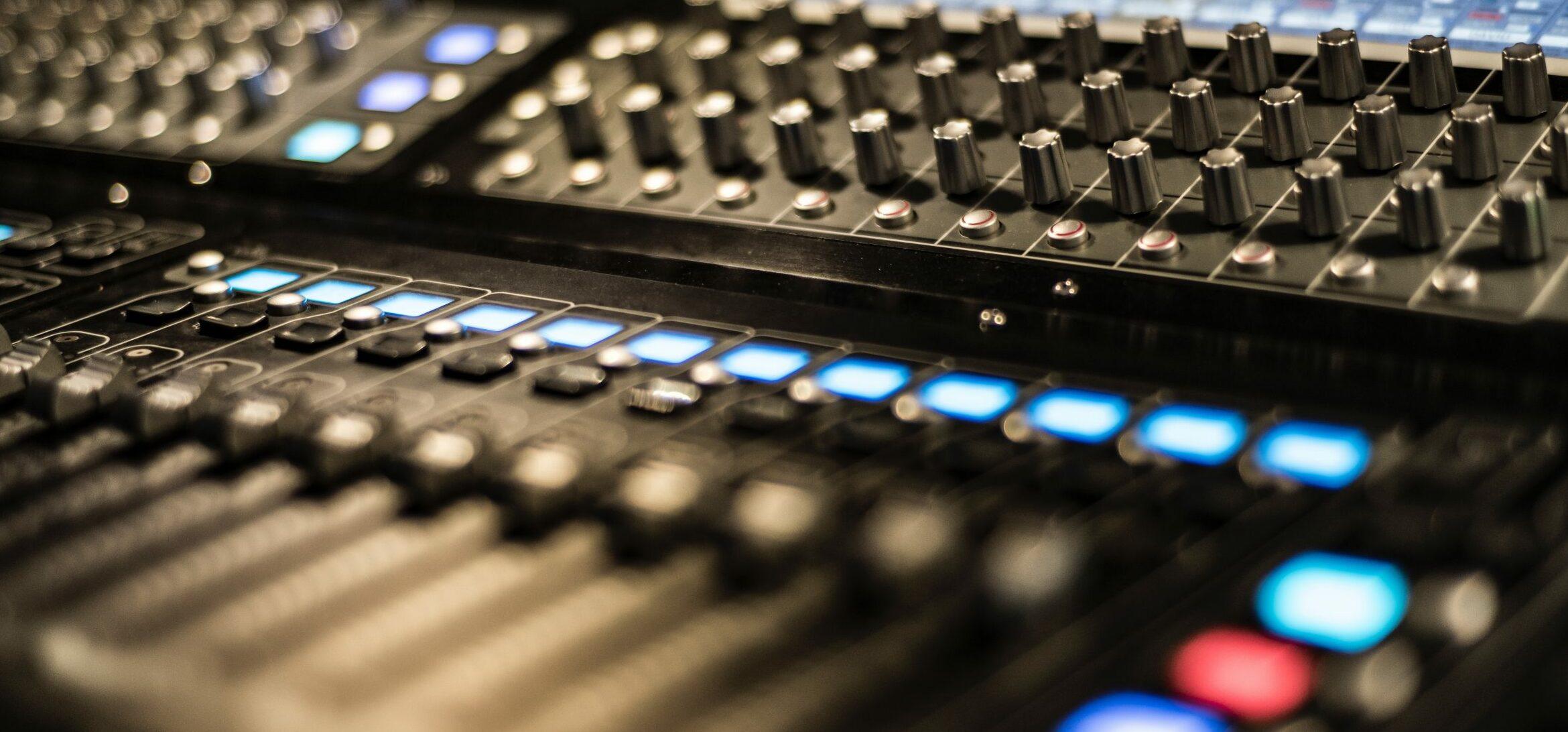To say that the audio synthesizer has forever changed, innovated, and defined modern music would be an understatement. Thanks in part to Robert Moog, artists across all genres have utilized audio synthesizers in their music since the 1960s. But well before this time, audio engineers, physicists, and tinkerers alike were discovering the potential of electronic sound generation. Still, it wasn’t until 1973 that Yamaha’s polyphonic keyboard synth, the GX-1, paved the way for commercial audio synthesizers. Today, we can listen to several decades of music built upon or decorated with synth sounds (perhaps best exemplified by that famous 80s sound). From Toto to Notorious B.I.G. to Nine Inch Nails to the sweep of bedroom Dubstep and Trance producers, we’ve all become familiar with these sounds. Yet few of us actually understand how audio synthesizers work. Let’s examine what synths are, exactly, and what makes them tick.
What is an Audio Synthesizer?
The word “synthesizer” stems from the Greek and Latin meanings of “placing together.” Today, we use the word “synthetic” to describe artificially composed objects or phenomena; and “synthesis” to describe the combination and summation of various sources. With these definitions in mind, we can better understand the audio synthesizer. Audio synthesizers create sound through artificial means by combining electrical signals. In other words, they’re electronic sound generators. Synthesizers strip audio down to its bare essence. Like fresh clay, the engineer or musician can take this raw material and sculpt it however he sees fit. The creative control offered by this audio equipment has made it a staple for recording studios.

How Do Audio Synthesizers Work?
To understand how synths operate, it helps to recall how other instruments produce sound. Musical instruments like guitars and trumpets generate sound via physical properties. Plucking a string or blowing into a horn produces continuous vibrations (sound waves) that move through the air. One can alter these waves in pitch, amplitude, and tone by changing certain parameters. Holding down a string higher up the fretboard produces a higher-pitched wave by increasing its frequency; blowing harder into a flute increases the waves’ volume by increasing its amplitude.
Unlike mechanical instruments, however, synthesizers, use electrical energy to produce and alter their sound design. Electricity is produced by the movement of charged particles (electrons and protons) through a conductor and measured in voltage. Manipulating voltage through resistors and varied circuitry yields different energy levels, which can be released in the form of sound waves. The ways in which this energy is routed and manipulated results in sound waves of various frequencies, amplitudes, and tones.
Digital vs. Analog Synths
Audio synths come in both analog and digital varieties. Both analog and digital synths require electrical input but process it differently. For analog systems, electrical energy must pass through physical conductors and complex circuitry to generate the desired sound. Digital synths take this concept but turn the tangible components into 1s and 0s. Here, electrical information is processed through digital code rather than routed through an analog circuit. This allows digital synths to store and recall data, produce unique sounds, and easily connect to digital audio workstations (DAWs).

Today, most producers use digital synths or a hybrid of the two, but the earliest synths were all analog. In the early 1970s, digital synths took over and offered additional options and features such as sampling and sequencing. However, some engineers still prefer the sound quality and tone of analog synths over digital synths. You’ll often find people using both analog and digital synths for different reasons.
What are the Components of an Audio Synthesizer?
Whether analog or digital, all audio synthesizers consist of the same components. They require an initial signal to produce a pure tone and create a pitch; filters to adjust the timbre or color of the note; an amplifier to control loudness, and modulators to further transform the sound wave. Let’s take a deeper look into what these synth components do and how they work.
Electronic Sound Sources: Oscillators
Audio synthesizers would be useless without their oscillators. An oscillator is responsible for generating the initial sound wave via an electrical signal. This wave is a pure tone or a waveform with a consistent frequency and amplitude. To the ear, these tones sound like unwavering, infinite hums of a single pitch. Oscillators can produce different types of waves that vary in shape and timbre. A typical sine wave is rounded and sounds relatively warm compared to the brighter, harsher tones of the square, sawtooth, and triangular waves.
Oscillators for digital synths or MIDI keyboards work a bit differently. Digital synths often come pre-loaded with sample sounds. These samples may replicate the pure tones generated by analog synths, or they may already be filtered and modulated. For instance, the Yamaha MX88 Digital synthesizer comes packed with more than 1,000 sounds, separated into instrument categories. Of course, one can still generate unique sounds with digital audio synthesizers via wavetables. These are simply encoded in the digital data rather than controlled by voltage. For hybrid synths (having analog and digital parts), voltage-controlled oscillators can actually be controlled by digital input through digital to analog conversion.

Oscillators also serve to adjust the pitch of the waveform by adjusting its fundamental frequency, or the rate at which the wave completes a cycle. The higher the frequency, the higher the pitch, and vice versa. So, without oscillators, audio synths wouldn’t produce any sound at all. But the synth sounds we know and love don’t just come from simple sine waves; they’ve been manipulated and combined to produce unique sounds. This is where the other synth components come into play.
Frequency Shifters: Filters
Every sound wave contains a fundamental frequency that produces its pitch. However, additional frequencies, known as overtones, also contribute to the sound. These overtones determine the overall timbre or character of the audio. Blocking or boosting certain frequencies changes the sound’s character in this way, making it warmer or brighter. Using synth filters creatively can make a once-pure sound wave sound more like a mechanical instrument. Filtering can also produce sounds wholly unique to the synthesizer. Turning a filter knob up and down over a pure wave results in the now heavily used sweeping sound as different frequencies jump and duck along the spectrum. Primarily, engineers use low-pass and high-pass filters to emphasize the wave’s lower or higher frequencies, respectively.

Loudness Controls: Amplifiers and Envelopes
To make the sound wave even more dynamic, synthesizers also feature amplifiers and envelope controls. In both analog and digital devices, amplification occurs by increasing the voltage at certain points. The more power, the higher the signal’s amplitude, and the louder the resulting sound.
With envelope controls, this amplification process can go a step further. These controls affect the attack, decay, sustain, and release of the sound wave. In other words, they allow the synthesized audio to mimic dynamic techniques musicians incorporate when playing their instruments. For instance, guitar players may hit a string with a strong attack, then quickly mute it for a staccato effect. Or, they might let a chord ring out for several bars. These same audio effects can be achieved with these envelope controls. Rather than let the sound wave go on forever at a steady volume, one can adjust any of these parameters to make the audio more dynamic, musical, and interesting.
Waveform Modifiers: Modulation
Audio synthesizers can’t exist without oscillators, but they don’t reach their full potential without modulation. Most of our favorite synth sounds result from some clever modulation, making it a key production technique for synthesizers. We can think of modulation as the flourishes that interrupt a sound wave to bring it to life. When playing the violin, for instance, experienced musicians often incorporate vibrato, tremolo, or other fine-tuned techniques to make the audio more dramatic. One might wonder how exactly this could translate to synthesized audio.

If we were to visualize what happens to a waveform during the violinist’s vibrato, we could reverse engineer the sound by precisely manipulating a steady waveform. Using vibrato slightly raises the pitch of a given note, then rapidly drops it back down, repeating this process for a given interval. In terms of synth modulation, this would require one to create frequent disruptions in the waveform where the fundamental frequency is temporarily and rapidly increased then decreased. Suddenly, that robotic hum sounds more like an organic quaver.
Of course, many more forms of modulation exist. Every one of them serves to create unique effects. Many experienced synth engineers and music creators combine multiple waveforms to create wholly new synth sounds. Doing this can cancel or amplify certain frequencies, create phasing or flanging effects, or even accurately imitate real-world instruments. This latter point speaks to one of the ways modern digital synths come loaded with so many realistic sounds. Some of these sounds come from actual recordings, but others are composed of heavily modulated oscillations. The more engineers learn about sound waves, the more equipped they become to replicate the natural sounds all around us. It’s almost like chemically concocting a flavor that already exists in the wild.
Conclusion
For half a century now, audio synthesizers have featured prominently in all types of music. Even today, musicians are creating never-before-heard sounds with their synths and discovering new possibilities. Entire genres have spawned from the work of Moog and other electronic audio pioneers. Understanding how these devices work and where they got their roots helps us make new musical and technological breakthroughs. And now, both digital and analog synths are more accessible than ever before. The future looks bright for the audio synthesizer.
If you enjoyed this article, check out Electronic Music Production to discover how your synthesizer can help you create a killer new mix!
À propos de l'auteur

Ethan Keeley
Rédacteur, chanteur, musicien et monteur audioEthan Keeley est un musicien, un doubleur et un écrivain de Rochester, dans l'État de New York. Lorsqu'il n'est pas en tournée avec son groupe Unwill, il travaille sur de nouvelles chansons et histoires.
Laisse un commentaire
Connecte-toi pour commenter.


